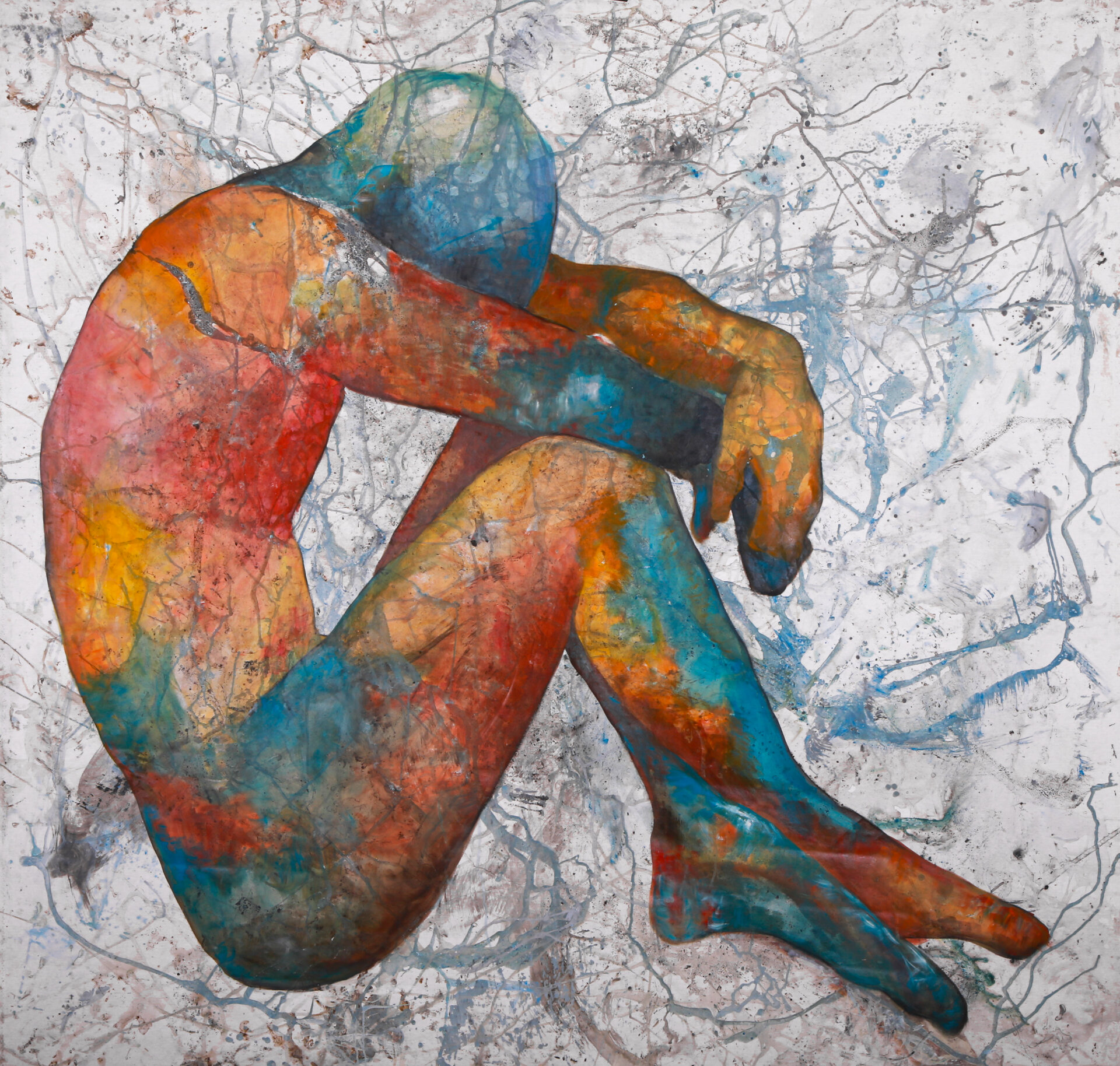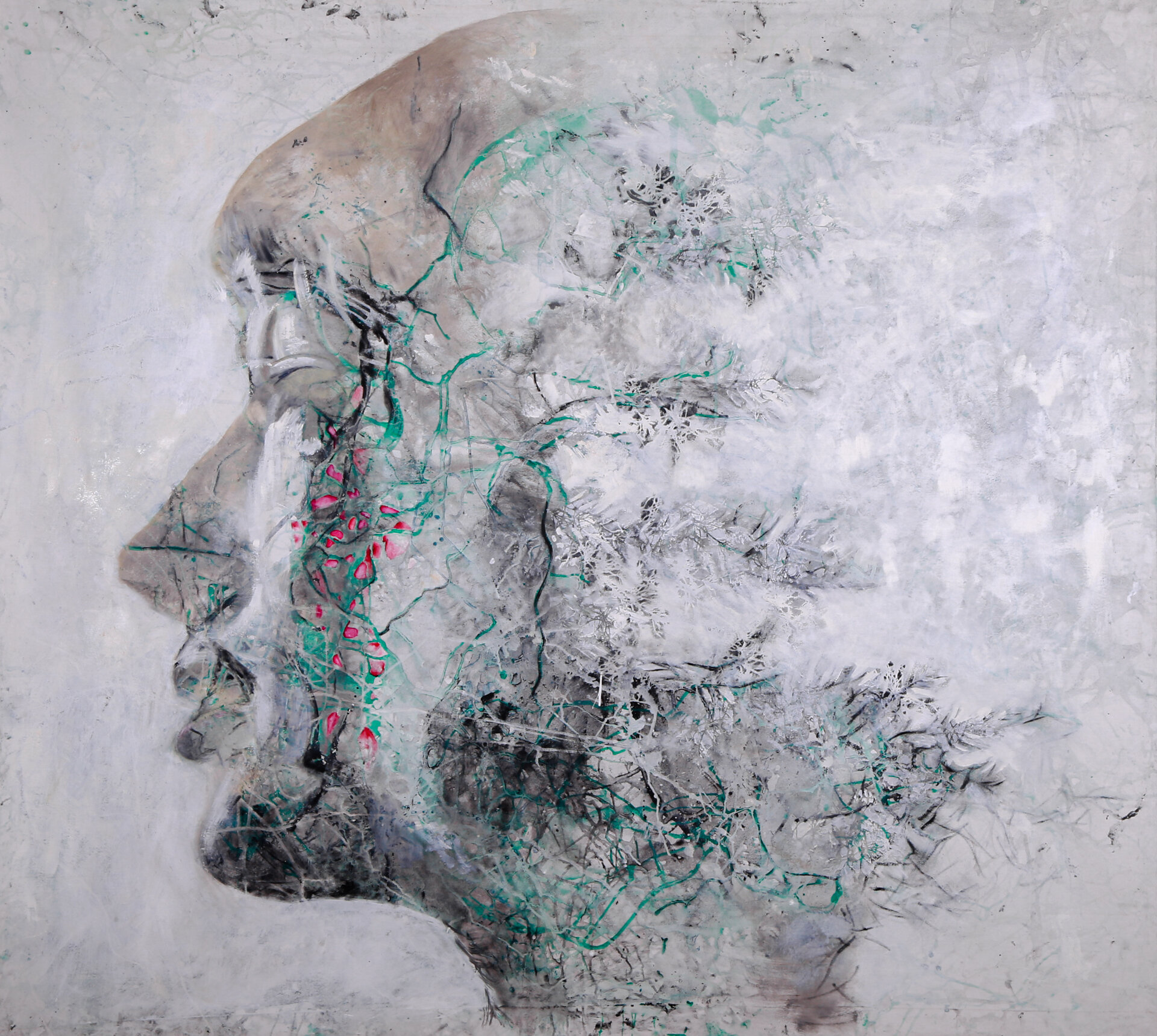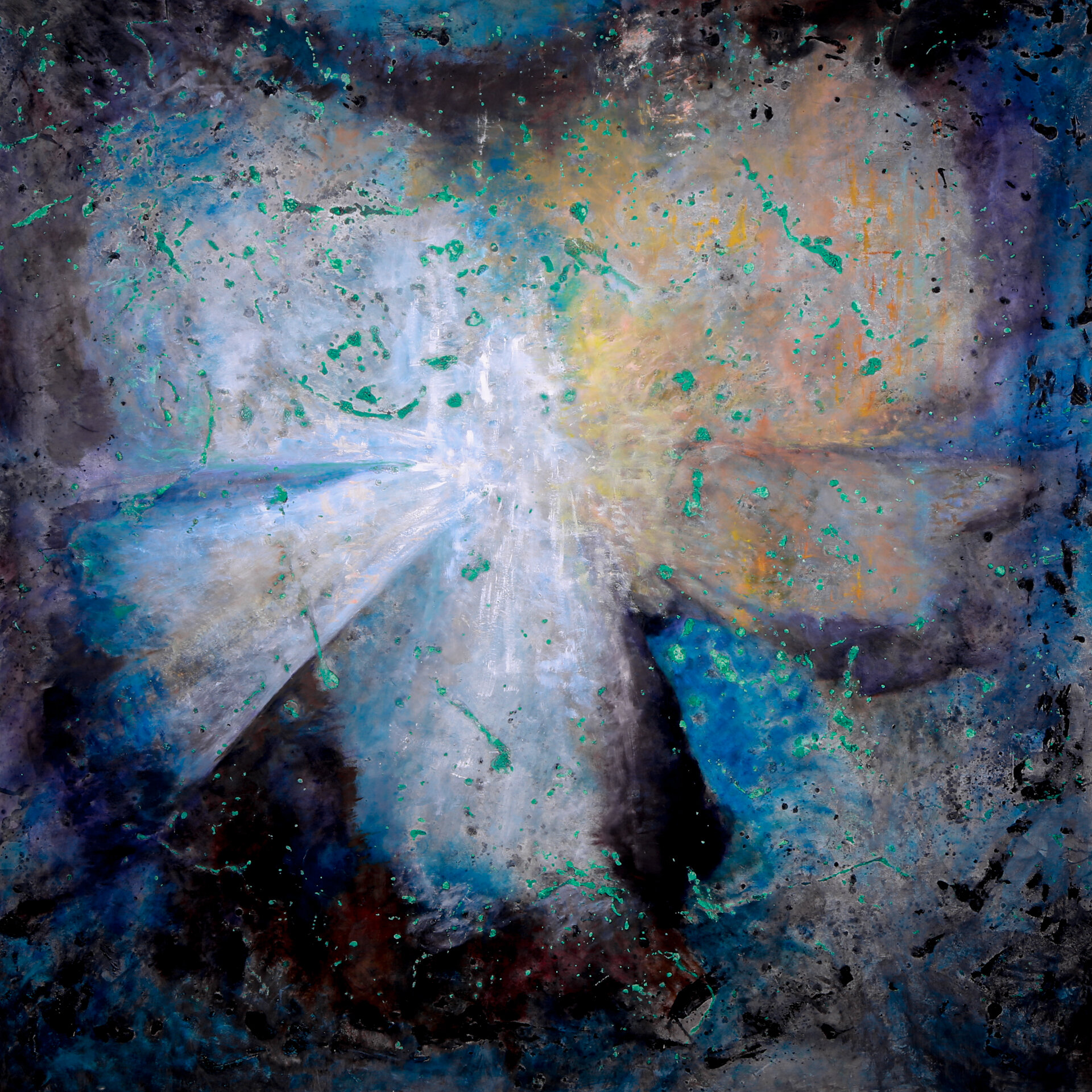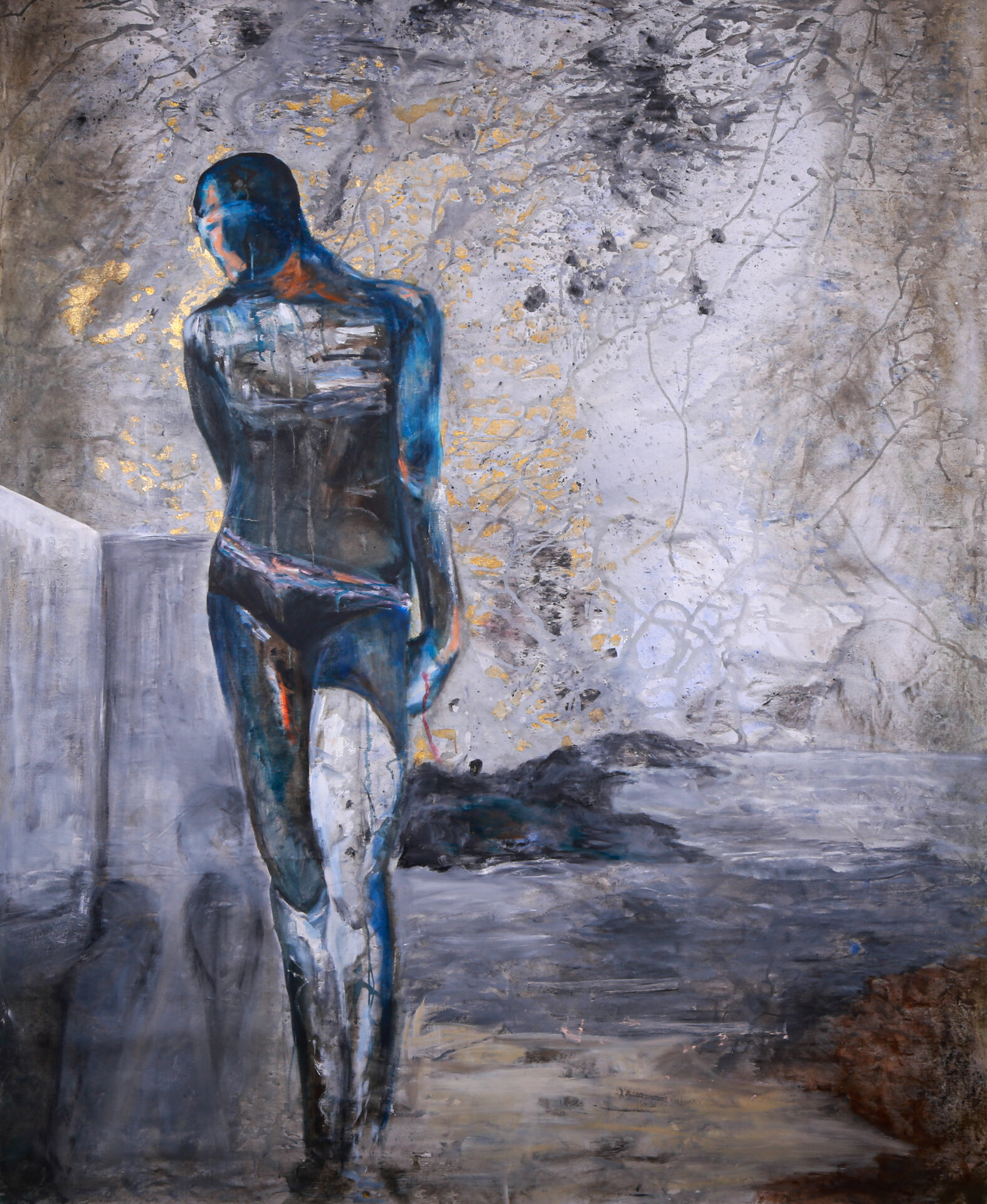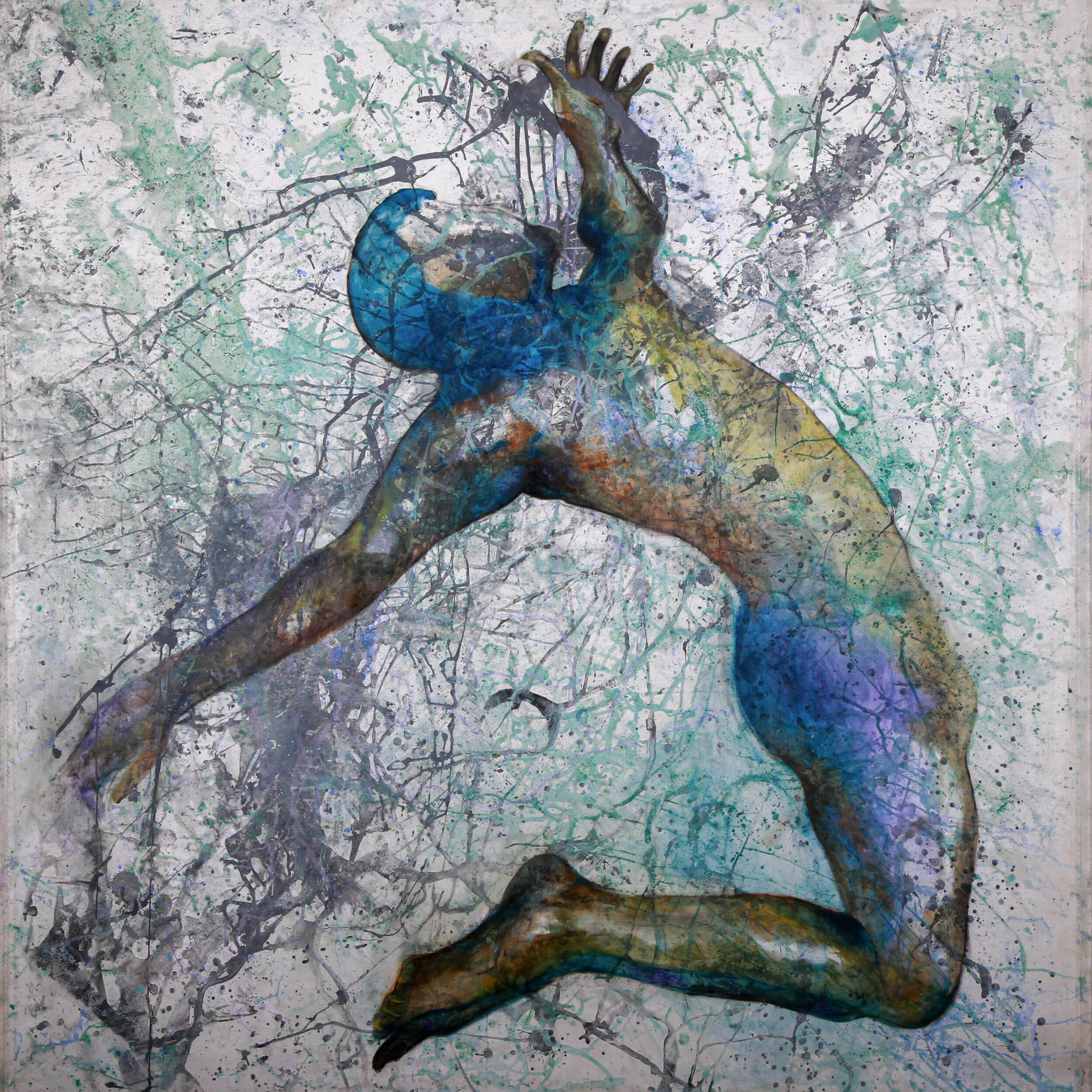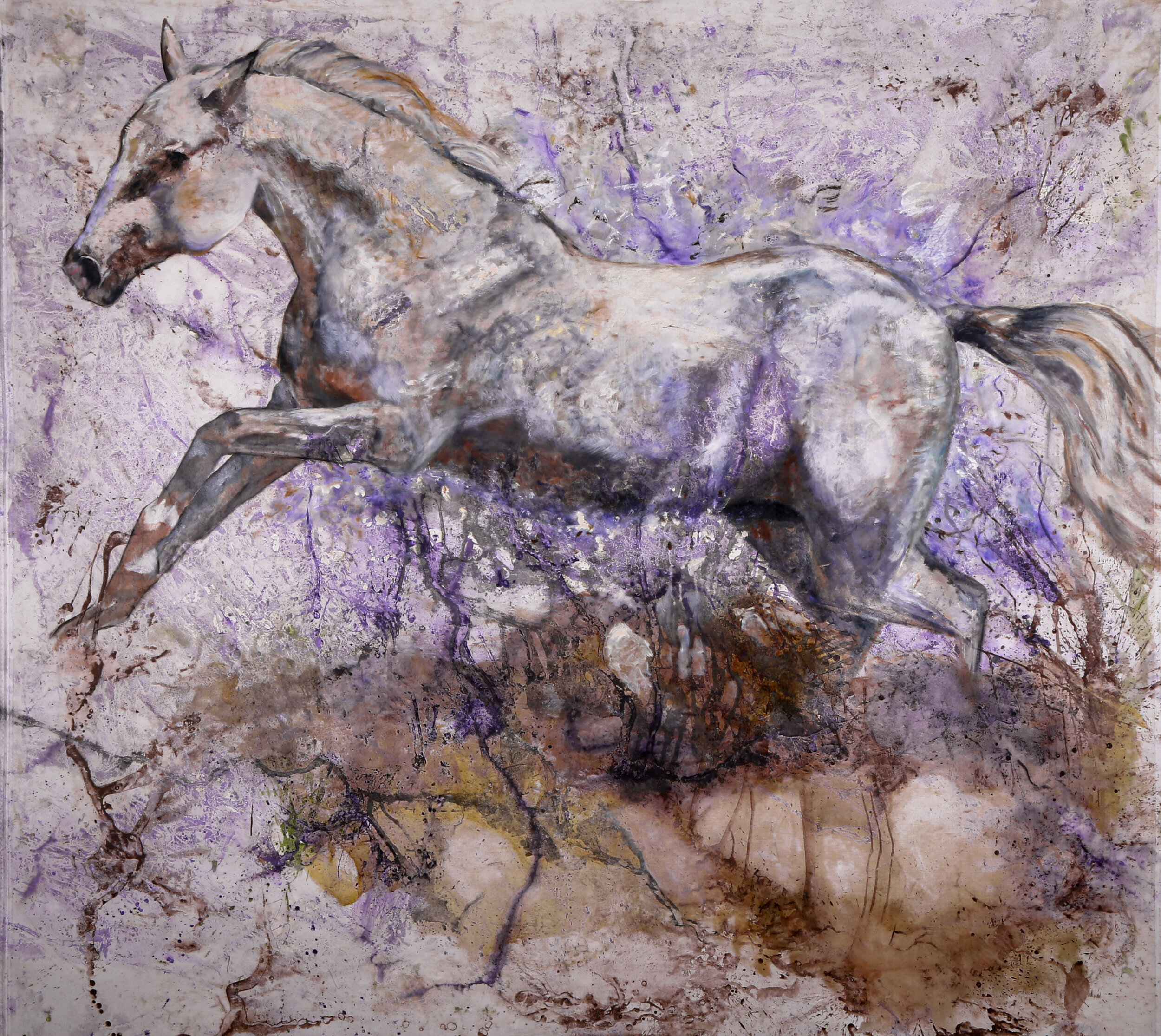Essence of Us
A collaborative series of large scale paintings by Andrea Moni that explores past trauma as a conduit to creative expression and healing.
Chaos as Deliverance: The Environmental Art of Andrea Moni
By Dr. Jeanne Willette
The medium is the ocean and the message is salvation. The specific site for this art making is a patch of shoreline, the unique ingredients are the jostling waves that run with the winds and the heat of the sun at the break of day. Like all the artists of her generation, Andrea Moni comes to painting in a state of belatedness, in a condition of coming after. To her is given the task of redefining the already defined. If anything can be said of painting in the twenty-first century, it is that the tradition is an assemblage of the already saids waiting to be overwritten. Moni, then, must begin at the beginning and readdress the very origin of mark-making, following the stroke, the streak, the touch to the place where control is relinquished.
To bow before process, to genuflect to the outcome of the act itself is to evoke Jackson Pollock and to recall that surely art is also a kind of dance. We know from the drift of art history that the true successors to Pollock were not painters but process artists, who, like Eva Hesse, saw the possibilities of unique materials, knowing that life was embedded there in the fabric of substance. Recalling the performances of Suzanne Lacy, who set an expectation for art theatrics that were both public and intensely private, Moni takes her place in the lineage that is going beyond postmodernism, seeking to reenact the primal. Her canvases are pure hybridity, a willful convergence of process, performance and act that sings of how a painting can be born.
Understanding that each event is unrepeatable, Moni is a bricoleur who inherited the postmodern mentality of hunting for her own way of painting, gathering ideas as possibilities and pushing amalgam back to its primal sources. Her painting is a collaboration, an out of control activity, driven by prime directives, whose imperatives must be obeyed. She gives over control to the others, at once natural and human, who will join the liturgy. The artist begins at dawn, poised at the edge of the sea, a partner at her side. Like a birth, this version of painting involves a struggle with the elements. She returns to atavistic colors, chosen by her partner, dried pigments, like those used by the cave painters. Into this colored dust, she mixes egg, concocting a natural tempera. The colors are then dropped on the exposed canvas and applied with implements found at the beach. But unlike Pollock there is no particular design that speaks of control, and the artist works towards no discernible goal. To the contrary, Moni cedes mastery, and, with her co-creator, carries the color dotted canvas, carefully folded into a manageable shape, and presents this offering to the waves. This gift to the sea will be Moni’s last act of control for hours.
In a great act of generosity, Moni gives her painting to the sea, trusting it will wash it back to her, allow her to retrieve her paradoxical act of creativity.
The creased cloth then breasts the waves, riding with the currents, which toss and turn and mix and drive the pigments into lines and streaks and stripes that are totally random, made by the ocean. Running with the wind, the artist must allow the process to complete itself. When the sea has finished its work, churning the colors, the fabric is ready to return to dry land. Lying on the sand, the canvas must be carefully unwrapped, gently so as to preserve the will of the waves. The reveal, the flattening, takes place in the sun. The glow of light will bake the marks and dry the performance, freezing the strokes of color in place. The artist does not intervene, she accepts what was given to her by the chaos of natural forces. Atavistically, Andrea Moni has engaged in a ritual ceremony with another person as her comrade. Water is more than a painter’s tool; water is an all-enveloping cleansing--a new beginning. Out of this chaos comes a sodden material square, covered with sand and imbued with salt. Obediently she carries the cloth made by nature’s turmoil away to find its gifts. The painting, And Have No Shame is a map drawn by the hand of the deep and these liquid flows of colors become veins that become the lifeblood of the painting. It is this fluid that gives rise to a resolution. These marks of life are what the sea gave and now this re-existence can restart and take a new direction with the artist regaining control. Peace has been found.
Moni’s collaborator at the edge of the sea will return in a renewed form, a turned head, a vulnerable neck, a rising body ascending upward, the result of a poetic encounter that is private and individual. The ceremony now becomes a work of art, entering into the rubric of artistic discourse. The first stage of the paining--the sea change—ends with the next phase when the dried canvas will be taken to her studio. Gently, Moni strokes away the encrustations of sand and inhales the absorbed salt that joined the natural pigments. These tempera tracks, now absorbed within the fabric, will hang, unfinished and unrealized, awaiting the first and final interventions of the artist. The lines of color are plaited here and there, while the strands of pigment are broken into rivulets and the tempera is coalesced into dried pools waiting for something to happen. As the wall-size sheet sways gently in the Pacific breaths, dreaming of Helen Frankenthaler, the artist gazes upon the surface irregularities long and hard, searching and seeking the form hiding in the crevices. Out these tides of colors, a figure emerges, as if rising from the waves, insisting on being born.
And This Too Shall Pass began as a site specific and totally unique example of environmental art, untouched by the artist’s hand, made by the weather and controlled by the environment and it ends in a contained contentment. The young man echoes his predecessor, Hippolyte Flandrin’s Young Man on the Edge of the Sea (1836), but announces a new postmodern classicism rising from the ruins. In And Break Free, just as Michelangelo felt a sense of discovery as his figures arose alive out of inert marble, Moni teases her subjects into being, a painter who has the heart of a sculptor. To make the intangible concrete, she now uses oil paint, which has a translucence that allows the traces of chaos to remain at a deep layer as a memory. The figures and the fragmented faces and broken forms remember their time of chaos, the instances of their formation tossed and turned in the foam, until they rise, like ancient statues out of an old civilization to live again. In its journey towards transcendence and healing the broken face turns away like a reluctant statue that may be mended and healed of its archaic breaking. The bronzed and hollowed ephebes return in a glorious Verdigris, glittering with hope. Already present, these hidden forms surface to a new and cleansed life, washed ashore and suspended in the space of the art of Andrea Moni
